|
||||||
|
||||||
| Home Nation World Business Opinion Lifestyle China Focus ChinAfrica Video Multimedia Columnists Documents Special Reports |
|
||||||
|
||||||
| Home Nation World Business Opinion Lifestyle China Focus ChinAfrica Video Multimedia Columnists Documents Special Reports |
| Editor's Choice |
| Xiamen grows through coordinated development |
| All these are new growth points, achieved in less than two decades, thanks to Xiamen's trans-island development strategy that has integrated the development of the main island with the growth of its four districts on the mainland |
| By Lan Xinzhen · 2020-10-16 · Source: NO.43 OCTOBER 22, 2020 |
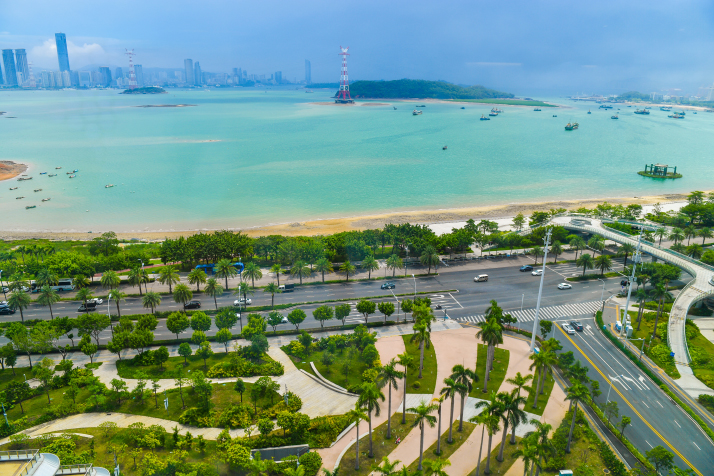 A bird's-eye view of Haicang District, Xiamen, Fujian Province, southeast China, on September 10 (WEI YAO)
The district of Haicang is to Xiamen what Manhattan is to New York City and Santa Clara to California. It is the star of the port city in Fujian Province, southeast China. Any investor, be they from home or abroad, visits Haicang to decide whether to invest in Xiamen, and almost all senior officials touch base with Haicang during their official inspection trips to Xiamen. 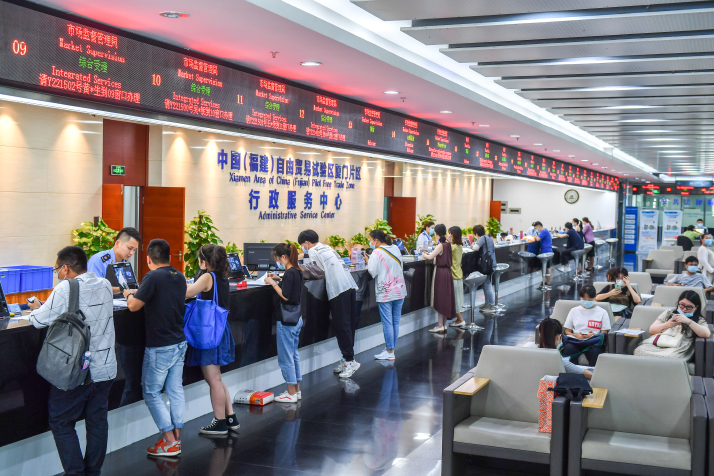 The Administrative Service Center of the Xiamen Area of the China (Fujian) Pilot Free Trade Zone on September 11 (WEI YAO)
Haicang lies west of Xiamen Island, with the Haicang Bridge spanning 870 meters of the sea to link it with the island. Growing in connectivity and strategic importance, it has a concentration of pharmaceutical, integrated circuits (IC), harbor transport and railway freight industries. Eastward and southward it is connected by sea around the world; westward and northward it links to Europe and Central Asia via the China-Europe freight trains. By virtue of this, it is a major distribution hub for import and export commodities in Xiamen, Fujian and even central and south China. And it hosts the Haicang Bonded Port, which is part of the China (Fujian) Pilot Free Trade Zone. All these are new growth points, achieved in less than two decades, thanks to Xiamen's trans-island development strategy that has integrated the development of the main island with the growth of its four districts on the mainland. 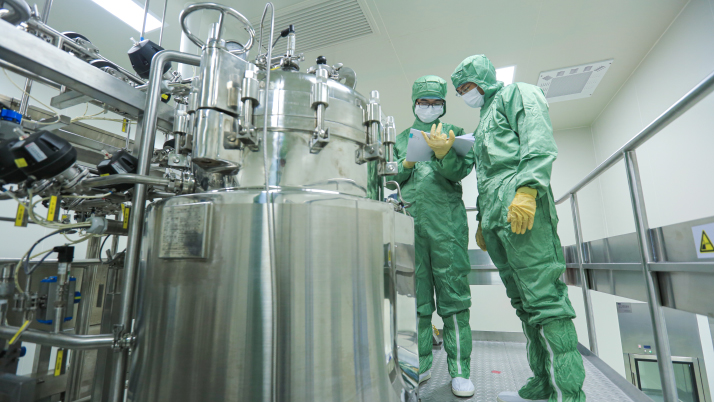 A bio-tech company's workshop in Xiamen in December 2017 (COURTESY PHOTO)
Growth across the sea According to the Xiamen Development and Reform Commission, through trans-island development, especially accelerated coordinated industrial development on the main island and outside, Xiamen has transcended its geographical limitation for economic development, creating greater space for industrial transformation and upgrading. The production expansion is accompanied by better industrial structure, quality and profits. The industrial layout is a good way to illustrate the trans-island development. Of Xiamen's 1,700-square-km area, the main island accounts for only 131 square km. In the past, when people talked about Xiamen, they referred to the two downtown districts on the island. But their limited area hampered the growth of industries at the outset of this century. Today Xiamen has 12 industrial chains each worth over 100 billion yuan ($14.9 billion). Of them five are on the island. By developing the other seven industries in the off-island districts, the space constraint has been removed. Without the trans-island development strategy, these may have never developed. In 1980, two years after the reform and opening-up policy began to be implemented, the Central Government set up four special economic zones (SEZs) to encourage foreign investment. Xiamen is one of them. At first, the Xiamen SEZ comprised only 2.5 square km in Huli District on the island. In 1984, it was expanded to the entire island. The trans-island development owes its conception to a visit in 2002. On June 14, Xi Jinping, then Governor of Fujian who had once worked in Xiamen, made an inspection trip. At that time, after several years of development and construction, the area on the main island was no longer sufficient to meet the economic and social development needs as the population and Xiamen's economy were growing. It was essential to have more development space. Xi proposed the idea of trans-island development, suggesting the off-island areas of the city be developed in coordination. The next day, Xiamen Daily covered Xi's proposal on trans-island development in a front-page report. Xiamen would build clusters with different functions outside the main island and establish a multi-level and well-conceived urbanization pattern to promote the integration of areas on and off the island, as well as of urban and rural areas. The existing infrastructure on the main island would be improved and new development projects implemented outside. The urban population of Xiamen and productivity would be distributed in a reasonable way, and construction of industrial zones and central towns outside the main island accelerated. 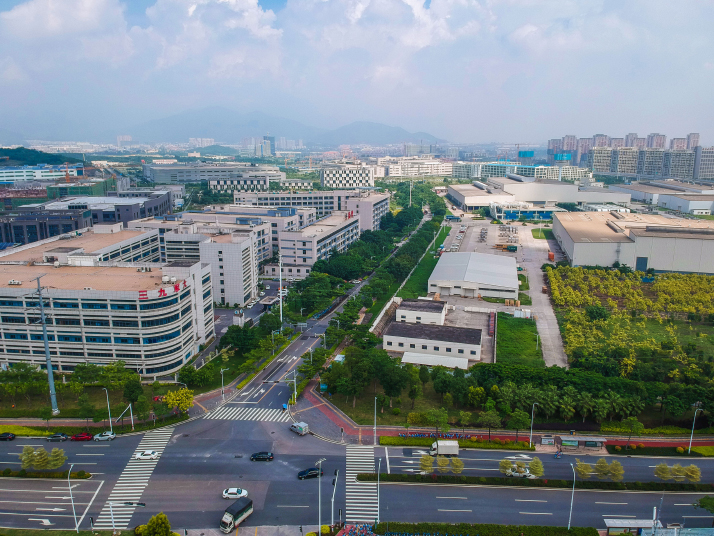 The bio-pharmaceutical industrial park in Haicang, Xiamen in Fujian Province in southeat China, on September 10 (WEI YAO)
To promote this envisioned trans-island development, Xiamen has built five cross-sea traffic thoroughfares, including Haicang Bridge, Asia's first steel box girder continuous floating suspension bridge with three spans; the Xiang'an Tunnel, the first sub-sea tunnel in the Chinese mainland, as well as the first sea-view metro line in China. In future the number of cross-sea traffic thoroughfares will be increased to 13. In June 2010, the Xiamen SEZ was expanded to cover all the six districts of the city. The districts outside the main island, which were badlands 40 years ago, are becoming new city areas with clusters of different industries such as aviation, hi-tech and new technologies and advanced manufacturing. 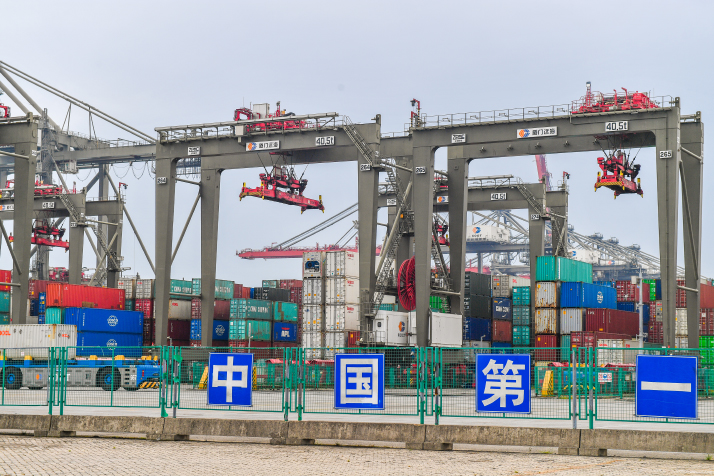 An automated terminal in the Haicang Bonded Port area on September 10 (WEI YAO)
Rising soft power "Creating an enabling environment for investors" is an essential part of the trans-island development strategy, which has helped the city attract investment from industrial leaders at home and abroad, including U.S. computer maker Dell and Coca-Cola. For instance, when Hangzhou Silan Microelectronics, specializing in designing chips and manufacturing semiconductors, inaugurated its workshop in Xiamen in August, the entire process—from getting project approval, building the workshop and starting production—took less than two years. "We chose Xiamen because it offers the best possible services and business environment," Xu Jingfeng, head of the workshop, told Beijing Review. It means when a company decides to invest in Xiamen, city officials offer help in the construction of factories and production. Also, since Xiamen boasts complete industrial chains, an investor in any industry will find a ready support system. When Xiamen decided to develop the IC industry in Haicang, the district government itself took the lead by setting up the Xiamen Semiconductor Investment Group with a team of experienced managers. These professionals advised Silan Microelectronics on its Xiamen project, which led to the company's decision to invest in Xiamen and facilitated the work. After several decades of reform and opening up, there is not much difference between different regions across the country in terms of preferential policies for attracting investment and the business environment. Therefore a region must have something new to attract investors. As a Chinese proverb says, to attract the phoenix, build the nest first. Sound services in Xiamen constitute the "nest" that attracts investors. This is the city's unique selling point. Currently, altogether 41 industrial clusters have been formed in Xiamen. For example, outside the main island, a mechanical industry cluster has been set up in Jimei District; in Siming District on the main island, clusters in finance, software and information and headquarters economy have been formed. Many renowned multinationals, including the Fortune 500 companies, have set up business in Xiamen. Future plans In 2002, Xiamen had an urban area of only 94 square km. In 2019, this had been increased to 398 square km. In 2002, Xiamen's GDP was 64.8 billion yuan ($9.59 billion), with only 14.9 percent of that coming from the four off-island districts. In 2019, the GDP jumped to 599.5 billion yuan ($88.68 billion), with the four contributing 46.7 percent. The 14th Five-Year Plan (2021-25) period has set targets for further trans-island development. Measures will be taken to ensure the GDP contributions of the four account for 55 percent of the city's total. By 2025, Xiamen's core competitiveness will be improved in an all-round way to develop it into an international metropolis. The city will not accept investment for projects indiscriminately. The main island will mainly develop science and technology innovation, high-end services and finance industries as well as culture and creative industries, tourism, convention and exhibition industries, and headquarters economy. The off-island areas will mainly develop advanced manufacturing, electronic and information technology, shipping logistics, biomedicine and urban agriculture. Industries coming with high pollution, and high energy and resource consumption will not be allowed. As a coastal city, Xiamen attaches great importance to the protection of the sea. Development both inside and outside the main island will be on the basis of ecological preservation. As Xiamen's official development plan envisions it, "Xiamen will attract people with its beautiful ecological environment, and then attract them to stay with quality services."
(Print Edition Title: Overcoming Limits) Copyedited by Sudeshna Sarkar Comments to lanxinzhen@bjreview.com |
About Us | Contact Us | Advertise with Us | Subscribe
|
||
| Copyright Beijing Review All rights reserved 京ICP备08005356号 京公网安备110102005860号 |